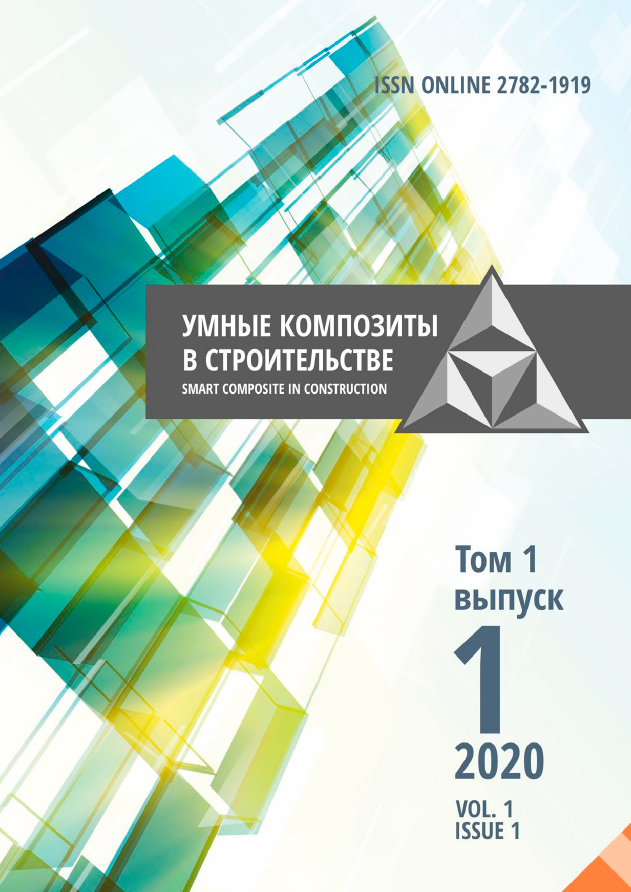Moscow, Moscow, Russian Federation
Ivanovo, Ivanovo, Russian Federation
Yaroslavl, Yaroslavl, Russian Federation
It is increasingly important to solve problems of increasing resistance of concrete to biologically aggressive media, since the species diversity of biodestructors is growing steadily. To develop new effective methods of concrete bioprotection, it is necessary to conduct complex research of corrosion processes in biologically aggressive media. The paper pre-sents a modern view on mechanisms of concrete destruction as a result of corrosion. The study determined the depend-ence of biological damage on the physical and mechanical properties of concrete, on the aggressiveness of biodegraders, as well as a number of factors accompanying this interaction. Cement concrete samples subjected to biofouling were used as objects of study. The study includes the main provisions which can be used to formulate the mathematical theory of biological corrosion. Finally, the study substantiates the condition of generality of the methodological approach to the modeling of mass trans-fer processes at biocorrosion and liquid corrosion of building materials.
concrete, biocorrosion, biodestructors, microorganisms, mathematic simulation, mass transfer
1. Videla H.A. Manual of Biocorrosion. CRC Press: Boca Raton, FL.1996, P. 272.
2. Krylenkov V.A., Antonov V.B., Ivanov S.Yu., Krogius M.E., Malyshev V.V., Startsev S.A., Chelibanov V.P. The main results of the biological examination in the investigation of the causes of the collapse of the canopy of the ground entrance hall of the St. Petersburg metro station "Sennaya Ploschad". Sat. mater. III All-Russian. Sci. - pract. Conf .: Env. probl. of biodegrad. of industr., building mat. and industr. waste. Penza: 2000. P. 57 (in Russian).
3. Ogarkov B.N., Ogarkova G.R., Samusenok L.V. The problem of microbial biodegradation of building materials, buildings and structures. Irkutsk State Univer. Bul. 2013. N 3. S. 113-115(in Russain).
4. Erofeev V.T., Bogatov A.D., Bogatova S.N., Smirnov V.F., Zakharova E.A. Investigation of the biostability of building materials taking into account their aging. Bul. of the Volgograd State Univer. of Arch. and Civ.Eng. 2011. N 22 (41). S. 73-78 (in Russian).
5. Sukharevich V.I., Kuzikova I.L., Medvedeva N.G. Protection against bio-damage caused by fungi. St. Petersburg: ELBI-SPB. 2009. 207 p. (in Russian).
6. Smirnov V.F., Semicheva A.S., Smirnova O.N., Zakharova E.A. Aggressive metabolites of fungi and their role in the degradation of materials of different chemical composition. Sat. mater. Conf .: Probl. of Env. Mat. Sci. Penza, 1995. S. 82-86 (in Russian).
7. Knop M. All about mushrooms. Moscow: BMM AO. 2000. 256 p. (in Russian).
8. Mikhailova R.V., Sapunova L.I., Kolesnikova S.S. Dependence of the enzymatic activity of fungi of the genus Penicillium on the food source. Control and manag. of biotechnol. proc. Gorky. 1985. P. 68. (in Russian).
9. Antonov V.B. Anthropogenic focal diseases of residents of a large city. J. of Infectology. 2009. V. 1. N. 2/3. S. 7-12 (in Russian).
10. Kondratyuk T.A., Koval E.Z., Roy A.A. The defeat of various structural materials by micromycetes. Microbiol. J. 1986, V. 48. N 5. S. 57-60 (in Russian).
11. Fedosov S.V., Roumyantseva V.E., Konovalova V.S., Loginova S.A. Mathematical modeling of diffusion processes of mass transfer of "free calcium hydroxide" during corrosion of cement concretes. Int. J. for Comput. Civ. and Struct. Eng. 2018. V. 14. N 3. P. 161-168.
12. Erofeev V.T., Fedortsov A.P., Bogatov A.D., Fedortsov V.A. Fundamentals of mathematical modeling of polymer concrete biocorrosion. Basic res. 2014. N 12-4. P. 701-707 (in Russian).
13. Levandovskiy A.N., Melnikov B.E., Shamkin A.A. Model-ing of porous material fracture. Mag. of Civ. Eng. 2017. 69 (1). P. 3-22. DOIhttps://doi.org/10.18720/MCE.69.1.
14. Travush V.I., Karpenko N.I., Erofeev V.T., Rodin A.I., Smirnov V.F., Rodina N.G. Development of Biocidal Cements for Buildings and Structures with Biologically Active Envi-ronments. Power Techn.and Eng. 2017. 4(51). P. 377-384. DOIhttps://doi.org/10.1007/s10749-017-0842-8.
15. Newale R., Sartape Y., Ramane A., Telrandhe S., Vairal S., Girish J. Structural Audit, Repair and Rehabilitation of Building. Int. J. Innov. Res. Sci. 2017. 6(3). P. 4679-4693. DOIhttps://doi.org/10.15680/IJIRSET.2017.0603255.
16. Selyaev V.P., Neverov V.A., Selyaev P. V., Sorokin E.V., Yudina O.A. Predicting the durability of concrete structures, including sulfate corrosion of concrete. Mag. Civ. Eng. 2014. 1(45). P. 41-52. DOIhttps://doi.org/10.5862/MCE.45.5.
17. Pepe O., Sannino L., Palomba S., Anastasio M., Blaiotta G., Villani F., Moschetti G. Heterotrophic microorganisms in deteriorated medieval wall paintings in southern Italian churches. Microbiol. Res. 2010. 165 (1). P. 21-32.
18. Han F., Zhang Z. Hydration, mechanical properties and durability of high-strength concrete under different curing conditions. J. Therm. Anal. And Calor. 2018. 132. P. 823-834. DOIhttps://doi.org/10.1007/s10973-018-7007-3.
19. Erofeev V., Rodin A., Rodina N., Kalashnikov V., Irina E. Biocidal Binders for the Concretes of Unerground Construc-tions. Procedia Eng. 2016. 165. P. 1448-1454. DOI:https://doi.org/10.1016/j.proeng.2016.11.878
20. Schlichting G. Theory of the boundary layer. M .: Nauka. 1974. 714 p. (in Russian).
21. Lavrent'ev M.A., Shabat B.V. Problems of hydrodynamics and their mathematical models. M.: Nauka. 1977. 408 p. (in Russian).
22. Rudobashta S.P., Kartashov E.M. Diffusion in chemical engineering processes. M.: KolosS. 2010. 478 p. (in Russian). 23. Fedosov S.V., Loginova S.A. Mathematical model of concrete biological corrosion. Mag. Civ. Eng. 2020. N 7. P. 130-138.







